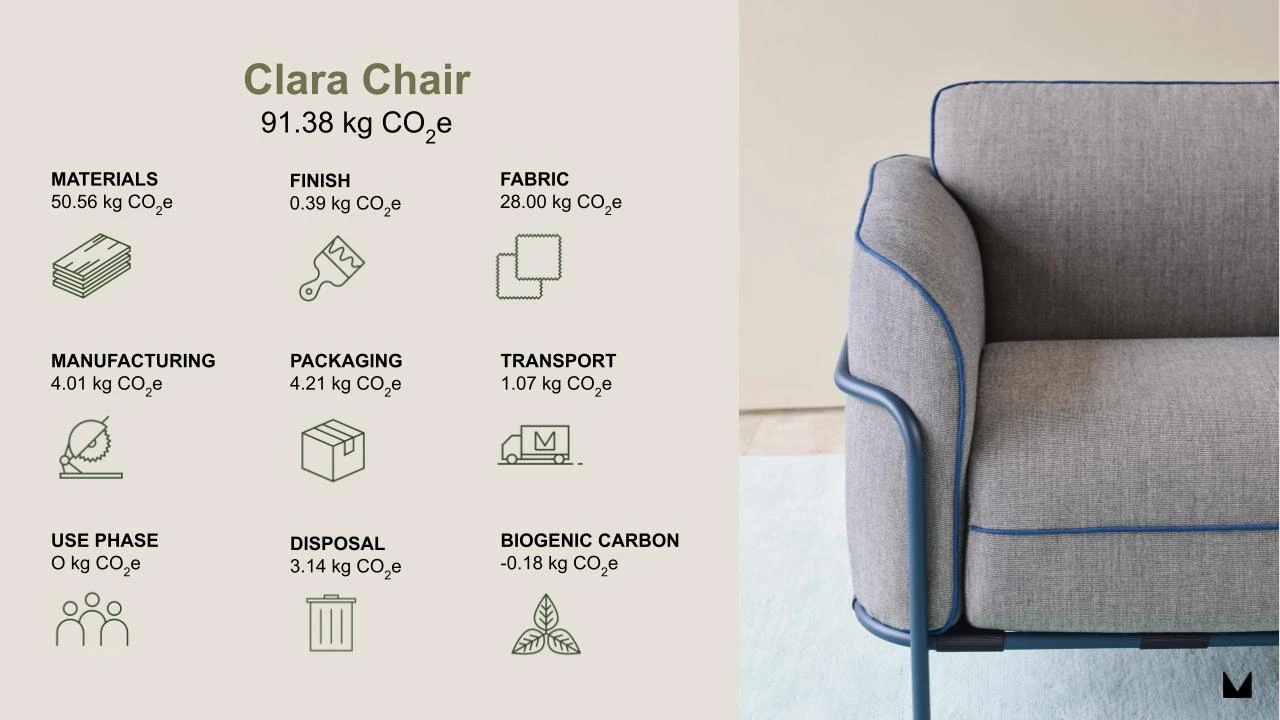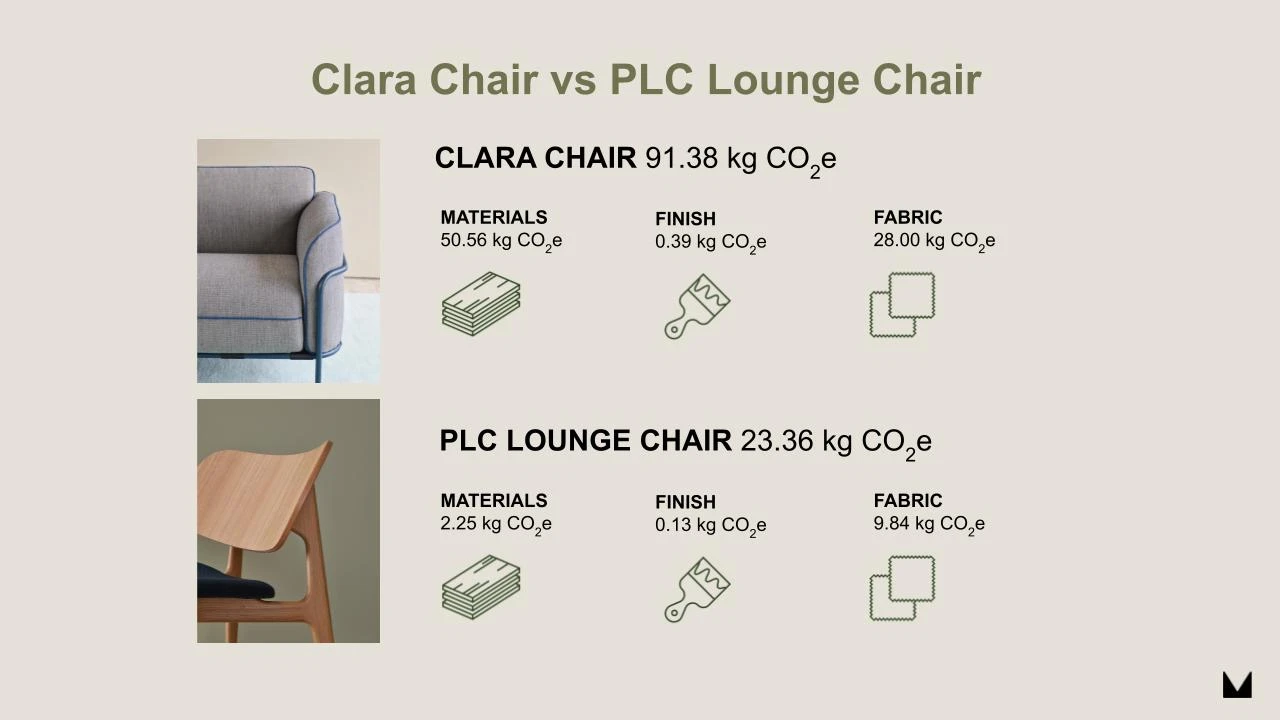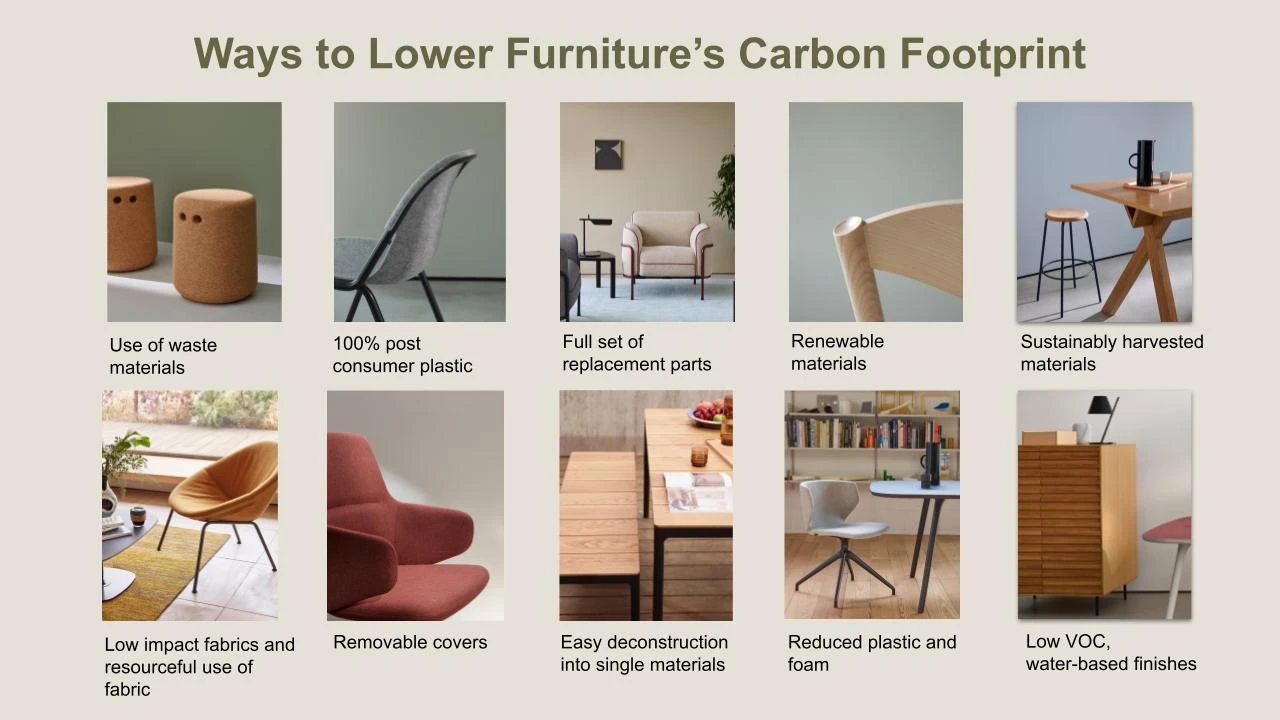
Webinar: Carbon and Furniture
20-Jul-2023
What is the Carbon Footprint of a Piece of Furniture?
A Primer for Action
A mebl | Transforming Furniture webinar
In this webinar, originally ‘broadcast’ live in May 2023, we explored practical approaches to fully calculating the carbon footprint of a piece of furniture. While this article briefly summarizes the webinar, watching the 60-minute video is significantly more informative!

Introducing the webinar speakers, Lucy Crane and Lucy Arndt
Speakers Lucy Arndt of Dodds & Shute and Lucy Crane of Modus engaged over 500 furniture designers, manufacturers, retailers, executives, interior designers, academics and sustainability officers in robust learning and exchange. Lucy Arndt provided an overview of sustainability, climate change and carbon, and introduced four sample tools for calculating a product’s carbon impact. Lucy Crane detailed and compared carbon calculations on various Modus furniture pieces – and explained how the company has achieved reductions in carbon emissions.
This webinar was produced by mebl | Transforming Furniture, and co-sponsored by the Sustainable Furnishings Council, IIDA NY Sustainability Circle, and New York School of Interior Design. It was also featured as part of NYCxDESIGN’s 2023 festival.
Here are 5 takeaways for getting started on a carbon-positive journey:

The full carbon calculation of the Clara Chair by Modus Furniture
1/ Carbon calculations reveal surprising carbon culprits.
When assessing the life cycle of a furniture piece (like the Clara Chair above), often the manufacturing, packaging, and transportation of the final product aren't nearly as carbon-intensive as the materials and fabric. Similarly, the ‘use phase’ of most furniture produces no carbon, as it releases or requires no energy. Materials are the biggest culprit - almost every time!
2/ To calculate the carbon footprint of a piece of furniture, understand its materials.
This includes material proportions, sources and production methods, and how far each material traveled to reach the manufacturer. A material breakdown exercise will reveal which ‘ingredients’ are most carbon-intensive.

Comparing the carbon count of two Modus lounge chairs
3/ A single material or design choice can make a big difference in carbon impact.
In the two-chair comparison (above), note that the PLC Lounge Chair scores much lower in equivalent carbon. This is because it is made largely from renewable materials - solid oak, oak veneer and pressed plywood. The PLC Lounge Chair contains 99.24% renewable materials - while the Clara Chair, by comparison, contains only 13.45% renewable materials. In addition, the PLC chair is designed with relatively little carbon-intensive fabric and foam.
In another example – as Modus developed its Edge-Free seating system, they discovered that a polyurethane foam version was almost three times as carbon intensive as one made with a coconut fiber filling. By scrapping polyurethane foam, they demonstrated how replacing a single ’ingredient’ with a more regenerative, natural material can lead to very significant reductions in emissions.
 10 ways to lower the carbon footprint of a piece of furniture.
10 ways to lower the carbon footprint of a piece of furniture.4/ There are many ways to cut down on carbon emissions when designing - or selecting - furniture with regeneration and circularity in mind.
In the image above, note 10 upstream solutions that extend the life of a furniture piece, thus reducing the need to extract more raw materials. One example involves replacing plastic and foam with renewable materials that are sustainably harvested -- or using post-production, post-consumer, or agricultural waste instead of virgin materials.
When designing with end-of-life in mind, it’s usually far better to design furniture as a system of modular pieces – with full sets of replacement parts and removable covers. A new chair cover, for example, can be 1/3 to 1/7 of the carbon cost of a new chair, and around half the price. Modular is also much easier to deconstruct into single, recyclable or reusable materials. All fabrics should be low impact and used resourcefully, and all finishes should be low VOC and natural.
"What is the Carbon Footprint of a Piece of Furniture? A Primer for Action" Webinar.
5/ Action can start with asking questions, which in turn prompts action.
To further drive change, furniture producers, designers and suppliers are encouraged to remain curious and open-minded and carefully consider what clients are requesting. Suppliers benefit from asking questions throughout the supply chain, demanding data from manufacturers to make informed material choices.
Furniture suppliers and designers can use Dodds & Shute’s Supplier Sustainability Audit as an industry benchmarking tool, to gauge what competitors are doing and take note of how they overcame carbon challenges. For more tailored data, tools such as Environmental Product Declarations (EPD), Malbar, and the free 2030 Calculator are popular in product and furniture manufacturing.
The mebl | Transforming Furniture webinar ‘What is the Carbon Footprint of a Piece of Furniture: A Primer to Action’ dives into the details of how to measure carbon - and how to engage specific tools and resources to design for regeneration.
WATCH THE WEBINAR
¹ What’s the difference between ‘embodied carbon’ and ‘carbon footprint’? Embodied carbon refers to greenhouse gas emissions during material and product production, while carbon footprint includes all emissions through to the end-of-life phase, such as use and disposal.
